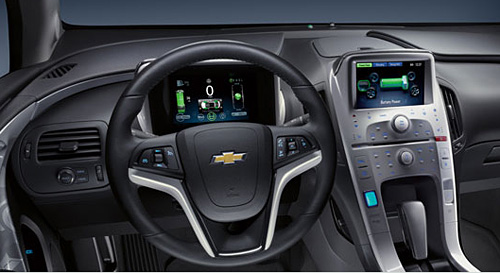By T.C. WORLEY
Last month, during a trip in Alaska, I had the opportunity to drive and test an electric car. The Chevrolet Volt, new this year, is not a car typically associated with anything outdoors. It can’t go off-road or haul copious piles of gear. But like the Toyota Prius, the Volt will likely find an audience with outdoorsy folks simply for its environmental story.
That story is different than the one the Prius tells, however. The Prius uses an electric motor at low speeds and a gas/combustion motor at higher speeds. In contrast, the Volt is propelled at all times by its electric motor. The Volt does have a gas motor, but it is often inactive, and when called upon the combustion engine works only as a generator to keep the electric motor’s juices flowing.

Before I even opened the door, a couple things intrigued me with this car. It is made in America, and the engine technology not only promised a solid environmental leap but also a step toward freedom from dependency on (oftentimes) foreign oil. In Alaska, I threw my backpack in the trunk and, over three days, drove the Volt a couple hundred miles. Here are a few points, good and bad, that struck me as significant on the long test drive.
Not an outdoors-oriented car. If your journey to the outdoors entails freeways and trailhead parking lots, the Volt will work fine. Plan on leaving the pavement (or good gravel roads) behind? Not in this car. Low ground clearance, road tires, and a design made almost 100 percent for pavement should tell you that the Volt has built-in limits. Traction control comes standard, but there is no option for all-wheel-drive. For steep, long grades and mountain passes the Volt has a “Mountain Mode” that will run the gas motor to make sure the battery keeps enough charge to get you up and over.
Gear capacity. The fold-almost-flat seats and its hatch-back trunk area allow you to heap a pretty decent amount of gear inside with a claimed 10.6 cubic feet of cargo space. But the car, which seats four people only, has limitations. A rack and a gear box from Thule or Yakima on top will be a necessary add-on for many gearheads.
Tow time? Nope. Boats, camper trailers, and pull-behind gear haulers are pretty much out of the picture. The owner’s manual discourages towing a trailer of any kind.

Drive all week without gas? OK, the weekend is over, time to head back to the office. With the Volt, if your commute is 30 to 40 miles roundtrip or less each day, you can pass up the gas pumps. The car has a 30+ mile range on its battery alone. At night you simple plug it in at home to recharge. Very cool.
Road trip distances. For any longer trip, you’ll quickly exhaust the battery charge and the car will turn on its gas motor to generate electricity. But on a single tank of gas, 9.5 gallons, the Volt is spec’d to roll for up to 375 miles. On these gas-dependent longer trips, fuel efficiency, at up to 40mpg, is respectable but not spectacular.








